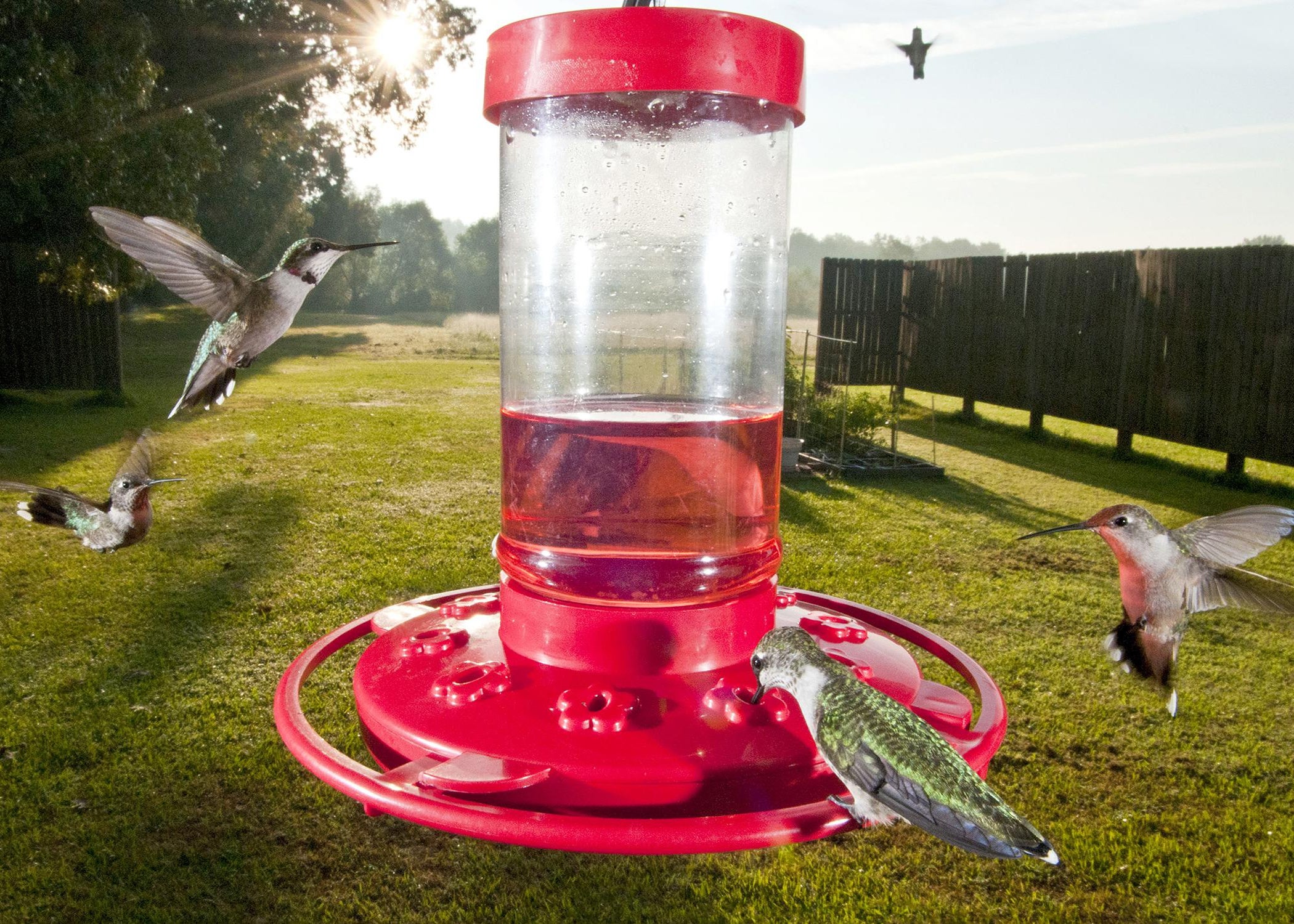How to have hordes of happy hummingbirds
Published 5:52 pm Monday, March 27, 2023

- FEEDER -- Sugar water feeders are an easy way to welcome hummingbirds to the landscape. (Submitted photo) Alt text -- Five hummingbirds gather at a red feeder. ###
By Bob Brzuszek
MSU Extension Service
It’s time once again to clean those hummingbird feeders and cook up the sugar water.
In Mississippi, we can set our feeders out in early March as hummingbirds are migrating north from southern climes. Providing food in backyards is important, as these birds need to consume half their body weight each day.
You can use commercial sugar mixes or make your own. Simply add one part granulated sugar to four parts water, boil to mix and prevent fermentation, and allow the mixture to cool. Place feeders high above cat level on porches in shaded locations.
In hot weather, it’s best to clean feeders twice a week; when temperatures are below 80, clean them about once a week.
Commercial hummingbird food is red because the birds are attracted to bright hues, especially scarlet, orange, red and white. It’s a good idea to plant a few of their favorite nectar plants near feeders.
If you use a feeder, place it near trees or shrubs for birds to perch on as they wait their turn.
You do not have to provide sugar water feeders when you add the correct combinations of flowering plants to the garden, especially plants with bright red or orange tubular flowers. Be sure to either have plants that flower throughout the growing season or combine different plants to provide nectar sources all year long.
Place flowering plants in multiple locations rather than in one spot. Hummingbirds are fiercely territorial, and the extra blooms give them food in various locations.
Annual nectar plants include begonias, geraniums, impatiens and zinnias. Perennial plants include monarda, liatris, asclepias, lobelia, iris, dianthus, spigelia, lantana, penstemon, phlox, salvia and verbena.
Hummingbird-friendly shrubs that grow well in the state include abelia, buddleia, jasminum, rhododendron, aesculus, weigela and yucca. Vines on fences are wonderful additions, and good options include lonicera, bignonia, ipomea and campsis.
Trees that provide flowers include vitex, malus, crataegus, robinia and liriodendron.
Backyard insects make up a large part of a hummer’s diet, so avoid using insecticides.
Water is important; while hummingbirds avoid deep water in a birdbath, you can add a few rocks or bricks to decrease depth. A garden mister is a great source of water for hummers in the summer. This small hose attachment shoots a fine mist into the air. Hummingbirds often bathe in the water that collects on leaves.
Add groups of trees or shrubs near fence lines to let birds perch and survey their territory. Males perch anywhere in the open, while the females prefer protected areas.
Hummingbirds favor horizontal tree limbs as nesting sites. They most often attach the nest to a branch and use plant fibers, fluffy seeds, lichens and spider webs to build the tiny nests. Birds usually won’t nest in high-traffic areas.
Gardening to attract hummingbirds is a great idea as it also creates a colorful, vibrant space to enjoy all year.
Visit Mississippi State University Extension Service Smart Landscapes at http://extension.msstate.edu/s





